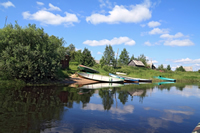The U.S. Environmental Protection Agency (USEPA) has released four new resources to assist State, territorial and authorized Tribal partners to address adverse effects of nutrient pollution, including freshwater harmful algal blooms (HAB). These resources will help to better protect recreators, aquatic life, and drinking water sources from the detrimental effects of nutrient pollution.
Final Recommended Nutrient Criteria for Lakes and Reservoirs
USEPA published revised recommended ambient water quality criteria under the Clean Water Act to help address nutrient pollution in lakes and reservoirs. As the first update to USEPA’s nutrient criteria in 20 years, these recommendations represent a significant advancement in the scientific understanding of the impacts of nitrogen and phosphorus in our waters. According to USEPA, the new criteria will help protect drinking water sources, recreational uses, and aquatic life in our nation’s lakes and reservoirs. The new recommendations are based on statistical stressor-response relationships developed from data collected in approximately 1,800 lakes nationwide and incorporated into national models.
Tracking CyanoHABs Story Map
USEPA also published a new ArcGIS Story Map that allows the public to learn about and track reported cyanobacterial HABs (cyanoHABs) in freshwaters across the country. CyanoHABs can harm ecosystems and contaminate freshwaters with toxins that can lead to serious human health impacts.
The USEPA’s Tracking CyanoHABs story map creates a single online resource for information about cyanoHAB events across the U.S. It consolidates freshwater advisory and closure information from State environmental and health agencies into user-friendly, interactive maps. In addition, the story map includes links to information on freshwater HABs causes and effects; several USEPA tools on HABs preparedness and response; and State and local HAB resources such as the laboratories that perform analysis of water samples for cyanotoxins.
Cyanobacteria Assessment Network Web Tool
The U.S. Environmental Protection Agency (USEPA) CyANWeb to help Federal, State, Tribal, and municipalities identify when a HAB may be forming where people swim, fish, and boat. The tool uses satellite data to alert users based on specific changes in the color of the water in over 2,000 of the largest lakes and reservoirs across the United States. CyANWeb, developed by the Cyanobacteria Assessment Network (CyAN) with input from users across the country, makes cyanobacteria satellite data more accessible to water quality managers, communities, and anyone interested in knowing more about water quality in their area.
CyANWeb uses historical and current satellite data to develop daily and weekly images that serve as an early warning system for HABs to aid in efforts to monitor and assess water quality. They can also help lake managers and people who swim, fish, or boat in lakes identify when a HAB may be forming. CyANWeb lets users view comparisons of multiple water bodies over time, as well as mark locations for future reference.
Support for USEPA’s Recreational HABs Criteria
To help States, territories and authorized Tribes protect swimmers from two cyanobacterial toxins (cyanotoxins) produced by cyanoHABs, USEPA has also published the Final Technical Support Document: Implementing the 2019 Recommended Recreational Water Quality Criteria or Swimming Advisories for Microcystins and Cylindrospermopsin. This document explains how States, territories, and authorized Tribes may adopt EPA’s 2019 recommended criteria for the two cyanotoxins into their water quality standards or use the criteria in swimming advisory programs. The document also addresses implementation of the 2019 criteria recommendations through other Clean Water Act programs including identifying and listing of impaired waters, and TMDL development.

